The Lumpy Skin Disease (LSD) has wreaked havoc on families who adore and depend on cattle for economic well-being. The epidemic is emerging as a serious threat to Kashmir’s diary drum as a lot of progress made towards self-sufficiency in milk could go haywire, reports Yawar Hussain and Humaira Nabi
For newspaper front pages, the virus-borne Lumpy Skin Disease (LSD) in Kashmir was just a number throughout. Dished out routinely by the custodians of animal husbandry, these numbers denote the state and status of the epidemic management. Deconstruction of these numerals offers horrifying anecdotes of loss to families who pet the cattle for sustenance. This is going to run riot with the impressive progress Kashmir had made, over the years, in managing its chronic diary deficit.
In the Shopian district, which officially produces around 300 thousand litres of milk a day, DK Pora village alone witnessed the death of nearly 200 cows in the last month with carcasses being thrown in the open. However, the official death count for the whole of Kashmir till the end of November’s first week stands at 1224.
In between the numbers dished out by the officials and the ground reality, Kashmir’s very upward moving diary sector is now facing the heat. The milk scarcity in certain villages has already started impacting life. People, for the time being, have more Kehwa than the nun-Chai.
The Loss
Unlike the past when the herds would grow with less effort, the twenty-first-century backyard cow-raring is a very expensive affair. Mohammad Jabbar, a resident of the Kuligam in Kupwara lost his jersey cow, two months after he purchased it for Rs 1,10000.
The loss, he says, is not just monetary but emotional as well. “The cow had joined our family as a member,” Jabbar said. “My two children were so fond of her. A person in a city would not understand what importance a cow holds in a rural-agricultural family.”
Jabbar had saved money for buying the cow for three years cutting down on his personal expenses. “I didn’t buy clothes for myself in the past two years. Not even on Eid. I had to do away with selling my scooter for Rs 25000 for buying the cow,” he said.
His anguish is fanned more by the fact that his cow, like scores of others in Kashmir, died even after all the cattle in the village had been vaccinated by the government.
Jabbar made all efforts to help his cow to survive after the animal was inflicted by LSD, a disease transmitted by blood-feeding insects, including some species of flies, mosquitoes, and ticks. After originating in Africa, it gradually spread to Eastern Europe, the Middle East, and Asia in the last few years. Disease management is also a very expensive affair. Jabbar spent Rs 12000 for the medication of his cow.
Jabbar, however, is not the lone sufferer. In Cherkoot, the village in his neighbourhood, 11 cows died in two days following the LSD outbreak.
The scenes of death and loss are enveloping Kashmir’s entire periphery. In Kulgam’s Sampora Derapora, the locals claimed that around 200 odd cows died. Kulgam district produces around 4.5 lakh litres of milk each day and is the major contributor to Kashmir’s milk industry.
Resident Mohammad Altaf Wani said the situation is so grave that the scenes of dead cattle lying along the roads of all adjoining villages are conspicuous.“It is a common sight here. People don’t have the means to hire an earth excavator to bury the dead cattle,” Wani said.
Wani said he couldn’t milk his cow after it developed LSD because of the excruciating pain that the animal was experiencing.“I knew that the milk is completely safe to drink and use but how could I have milked her when she had given up eating and was in so much pain,” Wani said, adding that he did not milk his cow till it died. “It is just an emotional issue.”
In the Wakura areas of Ganderbal, Hajra Bano, 55, lost a calf to the disease while her cow is fighting to survive now.
Hajra’s cow, six months pregnant, was diagnosed with LSD when she developed a high fever followed by an eruption of nodules all over her body.
“The cow was born here in our cowshed. She (cow) was my primary source of income,” a distraught Hajra said, adding that she followed every precautionary measure to protect the cattle but to no avail.
Detailing the ordeal, Hajra said that the cow barely produces any milk after LSD infection because the cattle give up eating the feed due to the pain.
Hajra made sure to fetch fresh grass every morning for her cow. Cattle inflicted by LSD have a problem consuming the dried-grasses or straw because it is hard for their sore-full mouth to chew it. “Over the past weeks, we spent more than Rs 5000 on her medication. This is a lot of money for us.”
A few days ago, Hajra’s family also lost a year-old calf to the disease. “The calf developed a high fever overnight. The next morning, I saw his left limb swollen. My husband called the doctor, they prescribed some medicine. But the calf couldn’t withstand the disease and died by the night.”
A few meters from Hajra’s house, Farooq Ahmad Sofi and his family are in mourning. Their six-year-old pregnant cow couldn’t sustain the disease and died leaving the family distraught.
Sofi, a labourer, had bought the cow for Rs 80000. “It is very hard for me to sustain. My monthly expenses and the education of my children were borne by the cow. She was one of the main earning members of our household.”
Danish, Sofi’s younger son, said that he could only continue in the school because of their now-deceased cow. “Numerous times, my mother paid my school fees from the money made by selling our cow’s milk.”
The New Crisis
The grief, of the families, doesn’t end with the death of their prized possessions. Disposing of the carcasses has become another challenge. Scenes of carcasses of once-considered family members are now being thrown in open or along water streams due to the lack of any burial places for the cattle.
Khazir Mohammad Lone, a resident of the Sonawari in the Bandipora district, took the carcass of his cow 10 kilometres to the banks of the Pohru river, a Jhelum tributary. He said scores of the carcasses of cattle from their village have been dumped either along water streams or in pastures. Due to the foul smell emanating from the carcasses it has become difficult for people to visit some areas of the village.
In DK Pora, Showkat Ahmad Mir said scores of LSD-killed cattle were thrown in an open area adjoining the village. “We can’t walk past these carcasses because it makes us sad. We share a deep emotional bond with our cattle.”
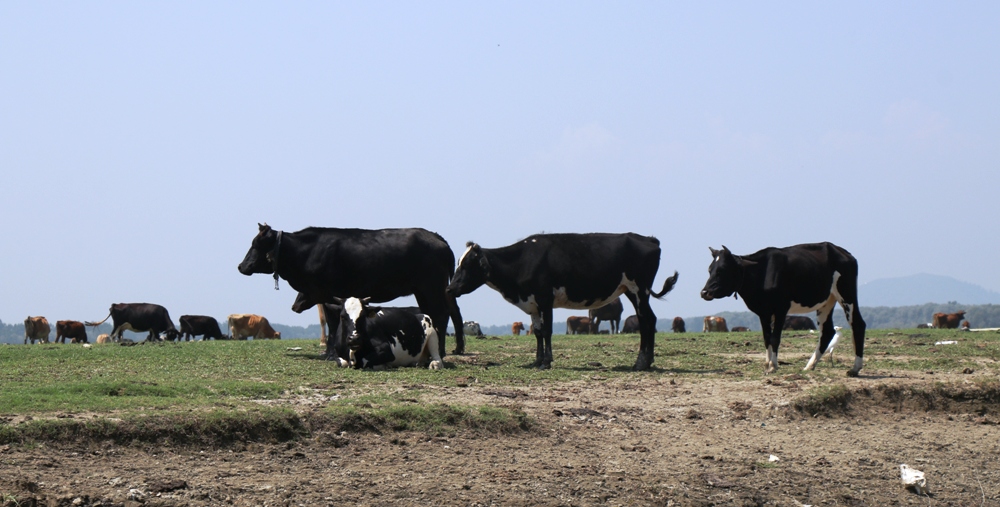
The formal protocol is that the LSD-killed cattle must be buried in six feet deep trenches after treating them with lime powder, to prevent the spread of the vector-borne disease. Initially, it was adhered to but as the death rate surged, distraught families started throwing the carcasses at isolated spots. Whether or not this trend will add to the infection but it is surely going to increase the dog population. In every village, dogs are feeding on these carcasses. There are reports, in certain villages, dogs are so overfed that they do not touch the new carcasses.
The government’s warning advisory on unscientific disposal of the carcasses hasn’t changed anything on the ground because the dairy farmers see burial costs as an additional burden.
“The concerned department should take the dead bodies and identify proper burial sites in each district. This will also help to contain the disease,” Khazir Mohammad Lone said, adding that burying properly means extra money which they can’t afford as treating the cattle has already drained out a lot of people.
Cattle DiseasesThe Kashmir livestock has been battling several diseases in past few years with the government fence-sitting. With traditional wisdom and veterinary help, they were managing these issues. However, the LSD has thrown up a challenge that Kashmir has not witnessed in the last many decades.
A senior official in the Animal Husbandry Department said that the government has no numbers of LSD deaths.
“The reports from the ground particularly south Kashmir are disturbing,” the official admitted. “We know the loss is very high but the actual numbers are yet to be ascertained.”
The official said that though the LSD is creating an uproar, it was Babesiosis that has been killing the cattle in Jammu and Kashmir in past few years. “Two years back, the government under a subsidy scheme asked the dairy farmers to buy live animals directly from outside,” the official said. “Those animals introduced Babesiosis in Kashmir.”
Babesiosis, a tick-borne disease of cattle caused by protozoan parasites of the genus, causes serious illness resulting in the death of cattle. It is primarily a tropical and subtropical areas-specific disease that the live animals brought to Kashmir.
Along with Babesiosis, Jammu and Kashmir also had to bear the brunt of the Foot and Mouth Disease (FMD) last year which killed 2000 odd animals.
The FMD mostly hit calves because their FMD-infected mothers were unable to feed them. As per government figures, nearly 18000 animals were affected by FMD which is caused by a highly contagious virus. It affects cloven-hoofed animals including cattle, buffalo, camels, sheep, goats, deer, and pigs. FMD is not readily transmissible to humans and is not a public health risk unless one decides to eat the affected animal.
The problem in treating animals in a timely manner also stems from the fact that only 10 districts in Jammu and Kashmir’s 20 districts have District Level Veterinary hospitals while there are just two Central Veterinary Hospitals in Jammu and Kashmir which are also in dismal condition.
There is just one Sub Divisional Veterinary Hospital in Jammu and Kashmir which is in Jammu while in the case of 323 Veterinary Dispensaries, just 11 are in Kashmir while Jammu has the rest of 312.
An Animal Husbandry Department official said the vaccines not working is because they have been administered to the cattle after they had contracted the virus.“The majority of deaths are being reported from Pulwama and Kulgam,” the official said, adding that Kashmir’s milk belt is under direct threat.
Kashmir’s Miky Way
The LSD impact has started showing up. A milk processing unit owner in Pulwama, wishing anonymity said that his unit’s output has gone down from 25000 litres a day to just 17000 litres.
“We used to collect surplus milk from adjoining villages in Pulwama and Shopian but now people in the last month barely have milk for themselves,” he said, adding that milk import has increased.“The rates are bound to go up soon if the LSD isn’t reined in.”
Kashmir produces nearly 40 lakh litres daily with south Kashmir’s four districts of Anantnag, Pulwama, Kulgam, and Shopian producing around 22 lakh litres per day while the remaining six districts in the valley produce the rest of the milk.
As per official figures, Anantnag has a cattle population of 1.53 lakhs with a daily milk production of 6,43,872 litres. A total of 35 per cent of the households in the district are associated with cattle and dairy farming at primary and secondary levels.
Kulgam and Shopian produce 3 lakh and 4.5 lakh litres of milk per day respectively while Pulwama tops the chart. Last year, official figures show Pulwama produced 31 crore litres of milk, against 28.04 crore litres in 2017-18. Every day, 8.5 lakh litres of milk is produced in Pulwama which has been declared as Anand of Kashmir.
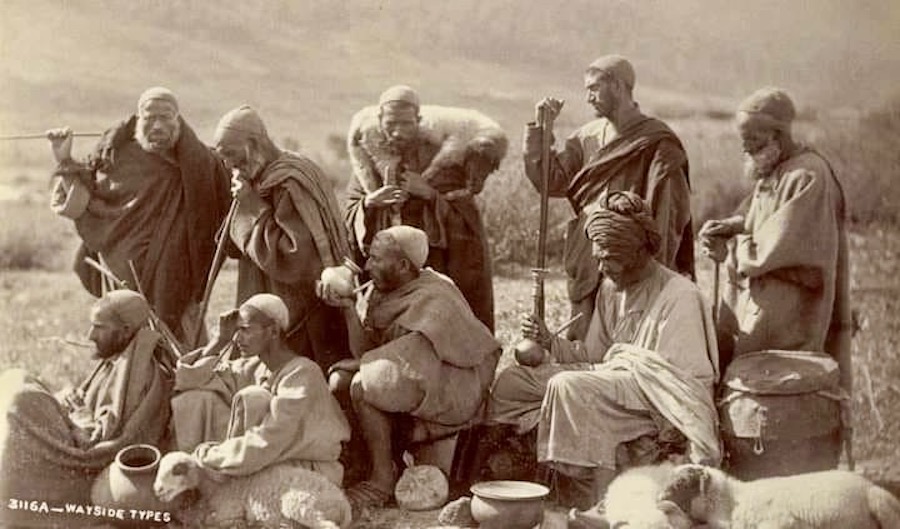
LSD is impacting the supply chain. Industry insiders said that if the disease remains uncontrolled Kashmir will soon have serious milk supply issues. Almost half of the milk is being managed by the local herders and in case the LSD continues killing their flocks, there will have a serious crisis.
As per official figures, Jammu and Kashmir consume around 29 lakh metric tons of milk in a calendar year of which almost 25 lakh metric tons are produced within Jammu and Kashmir and the rest is imported from Punjab and Haryana.
The other serious crisis is that the peasantry that mostly manages these small flocks is facing crippling issues with LSD mortality rising. A milch cow that fetches a farmer, five kilograms of milk a day, costs upward of Rs 50,000, right now. The costs spiral up, even to many lakh rupees, if the cow is from a superior breed. They lack any scheme that will insure the livestock, a facility that is basic in West and developed countries.
The milk production as per the breed of cows has witnessed a huge gap between the non-Descript cows and the Crossbred cows with the latter’s contribution to Jammu and Kashmir milk production almost doubling from 2014-15 to 2019-20.
As per the official figures, the Crossbred cows produced 984 tonnes of milk per day in 2014-15 which rose significantly to 1558.93 tonnes a day in 2019-20. During the same time period, the per day production of the Non-Descript cows rose from 338.42 tonnes in 2014-15 to just 384.84 tonnes per day in 2019-20. The data indicate that the expensive Crossbred cows are the bedrock of the milk industry in the valley and the deaths have been reported primarily among them.
According to official data, a crossbred cow in Jammu and Kashmir produces 8.09 kilograms of milk a day on average while a Non-Descript cow produces just 3.80 kilograms per day. There are cow breeds that fetch up to 50 kgs a day.
Industry Players
In 2004, the Jammu and Kashmir government inked a Memorandum of Understanding (MoU) with Gujarat Co-operative Milk Marketing Federation Limited which owns the famous AMUL brand. Under the MoU, the two liquidated Milk Federations of Jammu and Kashmir were revived on the pattern of Amul. Following this, a new organization in the name and style of “Jammu and Kashmir Milk producers ’Co-operative Ltd.’(JKMPCL) came into existence.
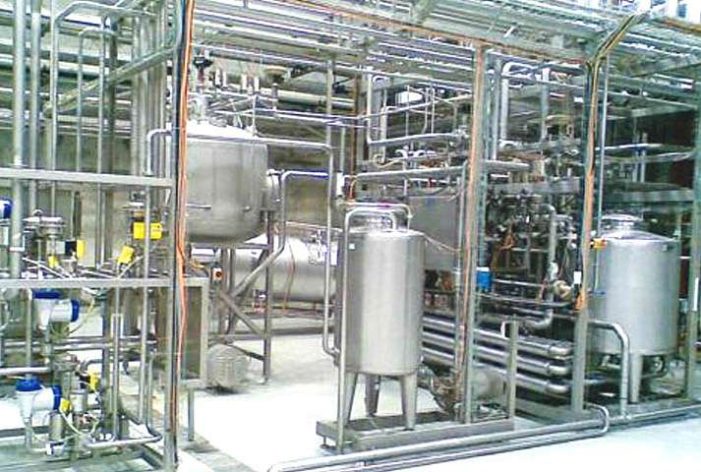
Presently JKMPCL has two milk plants at Cheshmashai and Satwari Jammu under the brand name Snowcap. The pasteurisation capacity of these two plants is 50000 litres per day (LPD) each and presently 15000 -17000 LPD and 9000–11000 LPD are sold from Srinagar and Jammu, respectively.
Another major brand in the valley is Khyber Milk owned by Khyber Agro Farms Limited. The company has a pasteurisation capacity of 150000 litres per day with sales of 60000-80000 litres per day. The company collects milk from the south Kashmir belt along with importing from the Jammu division as well.
The Zum Zum milk brand company has a pasteurisation capacity of 12000 LPD with sales of 6000-7000 LPD. Surya, owned by JK Dairy Cooperative Processing company has a pasteurisation capacity of 60000 LPD with sales of 45000 LPD to the army and 7000 LPD to the local populace. Verka, which is only sold in Jammu, has a sale of 11000 LPD.
A major player to enter the market itself is Amul India which is now selling milk under its own brand name in Kashmir. In a meeting with Lt Governor Manoj Sinha, Amul India Managing Director Rupinder Singh Sodhi sought a suitable piece of land to set up a new dairy plant in Srinagar.
Giving a peek into how big the industry is, Sodhi said they are eyeing to achieve Rs 325 crore turnover in 2022. In the last two years, Amul India alone procured milk worth Rs 350 crore in Kashmir. There are at least half a dozen more players in the market who seek supplies from the valley and in certain cases, they source their requirements from Jammu.
Kashmir Cattle
The Crossbred cows of Jersey and Holstein Friesen (HF) form 80 per cent of the milk-bearing cows in Kashmir while the rest is comprised of Indigenous and Non-Descript which includes unregistered breeds.
The introduction of Crossbred cows in Kashmir dates back to 1954 when artificial insemination was started in the state, with the establishment of two Artificial Insemination Centres, one each at Srinagar and Jammu. Natural service (mating) was replaced with artificial insemination using semen from Red Sindhi bulls.
However, the Sindhi breed introduced under the key village scheme for upgrading local cattle failed to gain popularity with the farmers as its performance was not at all impressive.
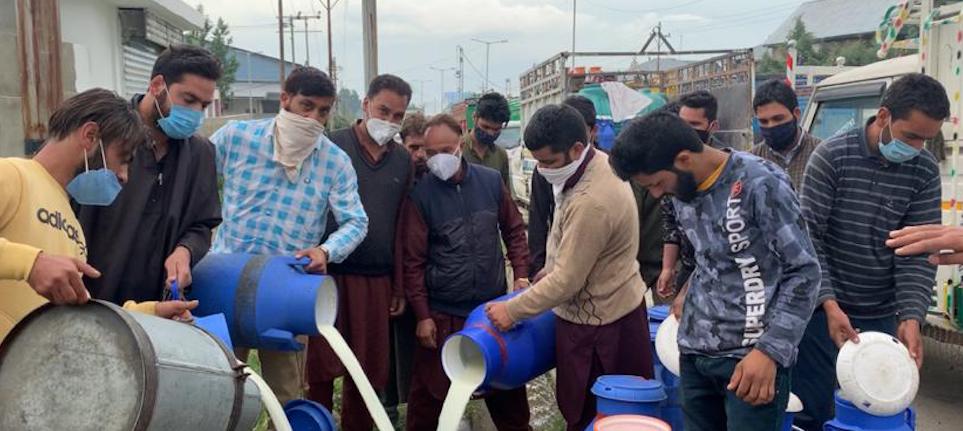
Following the failure, Hill Cattle Development Scheme for hilly regions was started in 1964. Under the scheme Jersey rather than the Red Sindhi breed was used for the up-gradation of local cattle.
In 1980 two frozen semen Banks, one each at Jammu and Srinagar were established with the assistance of the Danish International Development Agency. After the establishment of Frozen Semen Banks, artificial insemination facilities were extended to mountainous areas including those which remain cut off during winter, a research paper on cattle of Kashmir reveals.
While upgrading the livestock for enhancing the production of milk in cows and good quality wool in the case of sheep, the native breed was completely lost as the government failed to preserve the breed which had thrived in local conditions for centuries. Local stock is upgraded by using exotic germplasm – mainly from Jersey and Holstein Friesen (HF) breeds of cattle.
Ironically, the farmers were not able to feed the exotic species of cattle adequately due to the shortage of feed in Kashmir. These exotic species of cattle require large quantities of feed in comparison to the native breed of cows. The inadequate feeding reduced the output alarmingly.
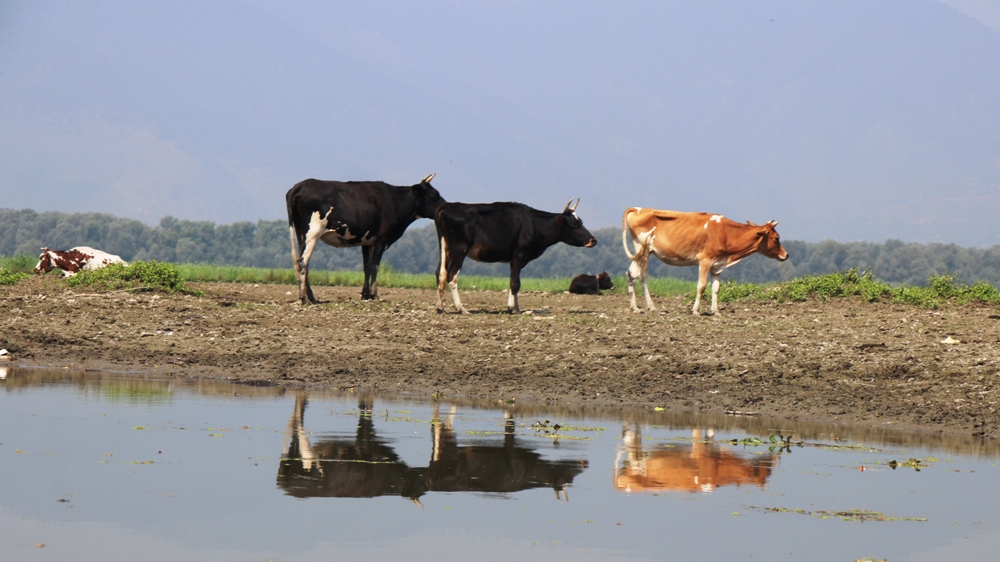
Government Response
According to official data, 64479 animals were affected by the LSD, which has now been reported as the “worst” animal epidemic to have hit Kashmir in recent times. A majority of the infected cows survive the disease, officials assert.
The Jammu and Kashmir government on September 20, imposed a complete ban on the import of bovine animals from neighbouring states and inter-district movement of bovines within Jammu and Kashmir for any purpose and declared Jammu and Kashmir as a “Controlled Area” for LSD. Most of the LSD-related meetings have been routine stuff.
The government also started a carpet vaccination drive across the union territory with November 15 set as the deadline for completing the vaccination of all eligible cattle against lumpy skin disease (LSD) in all districts of the Union territory.
“This is for the first time that the cattle from our region have been affected by LSD. The imported cattle from hotbed zones including Rajasthan and Gujarat have been the main source of the disease here in the valley,” Dr Abbas Rashid Bhat, assistant Veterinary surgeon, at the Department of Animal Husbandry said. “With a reported morbidity rate of around 5-43 per cent and a mortality of 2.5-5 per cent in several parts of the world, we are witnessing a relatively higher percentage here in our valley.”
The department of Animal Husbandry has formed rapid response teams in each district. The teams carry and provide treatment to the cattle that are diagnosed with the viral disease.
“Sensing the gravity of the outbreak authorities have promptly launched a mass cattle vaccination campaign where the veterinarians carry out door-to-door vaccination process,” Dr Bhat said.“Most of the cases that we receive are pregnant cows because in pregnancy there is a lot of stress and a decrease in the immune response of the cattle. We are currently using the Goat pox vaccine to protect cattle against the LSD virus. We have covered a large number of cattle across the valley.”















